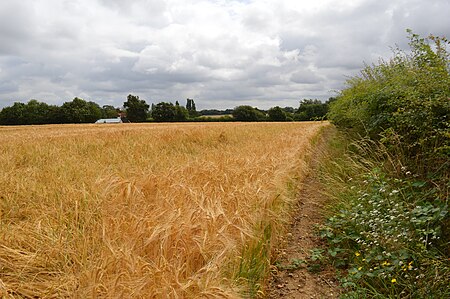Newney Green Pit

Newney Green Pit is a 0.07-hectare (0.17-acre) geological Site of Special Scientific Interest west of Writtle in Essex. It is a Geological Conservation Review site.This former quarry exposed the Kesgrave (Thames) Gravel, first recognised in Suffolk, dating to the Cromerian interglacial around 500,000 years ago. This preceded the severe Anglian ice age, which is also seen, marking the transition to glacial conditions. The site is described by Natural England as "of prime importance for the correlation between Pleistocene stratigraphic sites in the Thames and East Anglian areas". Ice wedge polygons just below the Anglian layer reveal very cold conditions just before the advance of the ice sheet across East Anglia.The site has now been filled in and is part of a field.
Excerpt from the Wikipedia article Newney Green Pit (License: CC BY-SA 3.0, Authors, Images).Newney Green Pit
Newney Green, Chelmsford Writtle
Geographical coordinates (GPS) Address Nearby Places Show on map
Geographical coordinates (GPS)
| Latitude | Longitude |
|---|---|
| N 51.732 ° | E 0.385 ° |
Address
Newney Green
Newney Green
CM1 3SQ Chelmsford, Writtle
England, United Kingdom
Open on Google Maps









